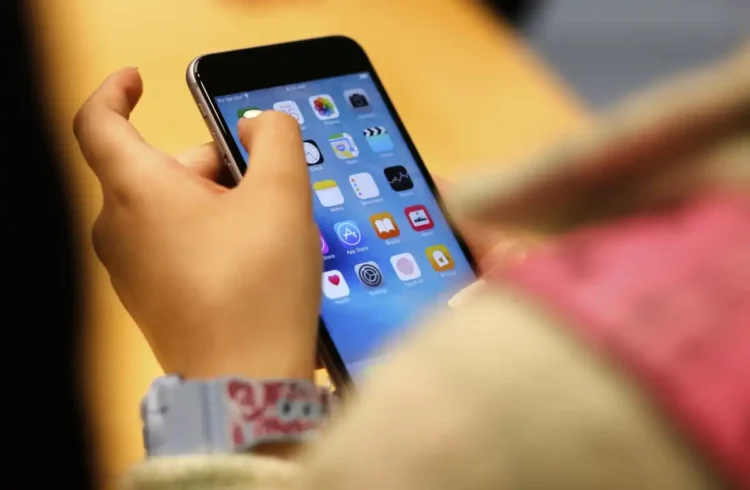China-Linked Hacks, User Errors Fuel Mobile Security Meltdown in the U.S.
A growing number of mysterious smartphone crashes set off alarms among cybersecurity experts late last year — and they weren’t just random glitches. The affected devices all belonged to people in sensitive professions: government, politics, tech, and journalism.
Behind the scenes, it turned out to be a silent but sophisticated cyberattack. There were no clicks, no suspicious links — just smartphones quietly compromised, likely by foreign hackers exploiting invisible vulnerabilities.
China’s Digital Footprint in U.S. Devices
Cybersecurity investigators at iVerify, the firm that spotted the crashes, believe the attacks originated from groups aligned with the Chinese government. Their evidence? Every target had some previous link to Chinese hacking campaigns — and each worked in areas of strategic interest to Beijing.
“These aren’t your everyday phishing scams,” said Rocky Cole, iVerify’s COO and a former cybersecurity expert at the NSA and Google. “We’re living through a mobile security crisis, and no one’s really watching the phones.”
A Wake-Up Call for Mobile Device Security
Phones are more than communication tools — they’re digital hubs that control drones, conduct financial transactions, manage infrastructure, and hold confidential conversations. And while phones themselves are often well-protected, the real risk lies in their ecosystem: third-party apps, accessories, and internet-connected devices.
“It’s not just your phone — it’s your smartwatch, your smart TV, your kids’ toys,” said Snehal Antani, CEO of Horizon3.ai. “Researchers have literally hacked the microphone in a Barbie doll.”
A Pattern of Exploitation
U.S. officials have been increasingly vocal about the threat. In December, they exposed a broad Chinese campaign targeting Americans’ text messages and phone calls.
Even high-profile political figures like Donald Trump and his running mate JD Vance had their phones targeted during the 2024 election campaign. The Chinese government denies these allegations, accusing the U.S. of its own global espionage and using “national security” to keep Chinese firms out of Western markets.
Still, experts warn that Chinese telecom companies — some of which still operate routing and cloud storage systems in the U.S. — pose ongoing risks.
“The American public deserves to know whether Beijing is quietly embedding itself in our critical infrastructure,” said Rep. John Moolenaar, chairman of the House Select Committee on the Chinese Communist Party.
When User Mistakes Open the Door
The problem isn’t just hackers. Sometimes, the biggest security flaws are human.
Former Trump national security adviser Mike Waltz accidentally added a journalist to a Signal chat group discussing military strategy. Secretary of Defense Pete Hegseth used a personal computer connected to an unsecured network so he could message officials on Signal — a messaging app not cleared for classified information.
And in a particularly troubling case, someone impersonating Susie Wiles — Trump’s 2024 campaign chief — sent messages to governors and business leaders, apparently using contacts pulled from her compromised personal phone.
“It doesn’t matter how secure your device is,” said Michael Williams, a national security expert at Syracuse University. “If you’re not following basic precautions, you’re inviting trouble.”
The Bigger Picture: A Global Tech Arms Race
As smartphones become integral to modern life, they also become attractive targets in the geopolitical cyber arms race. Mobile networks have been a top concern for U.S. and allied governments, with many banning or phasing out Chinese telecom firms from their infrastructure.
A new U.S. initiative — a “cyber trust mark” for smart devices — aims to reassure consumers. But experts say that label alone isn’t enough.
“Our adversaries are innovating faster than we’re securing,” said Cole. “We’ve got to start treating mobile devices as frontline battlegrounds, not just gadgets.”
Source: AP News – Chinese hackers and user lapses turn smartphones into a ‘mobile security crisis’
This article was rewritten by JournosNews.com based on verified reporting from trusted sources. The content has been independently reviewed, fact-checked, and edited for accuracy, tone, and global readability in accordance with Google News standards.
Stay informed with JournosNews.com — your trusted source for verified global reporting and in-depth analysis. Follow us on Google News and BlueSky for real-time updates.
JournosNews.com follows Google News content standards with original reporting, verified sources, and global accessibility. Articles are fact-checked and edited for accuracy and neutrality.












